Don't wanna be here? Send us removal request.
Text
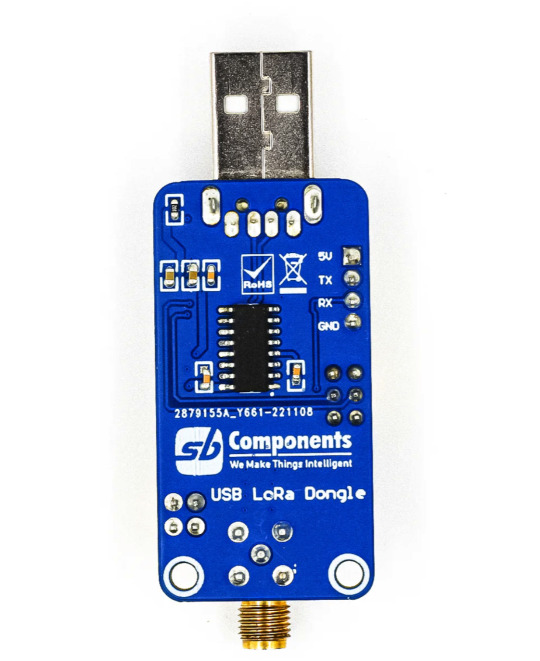

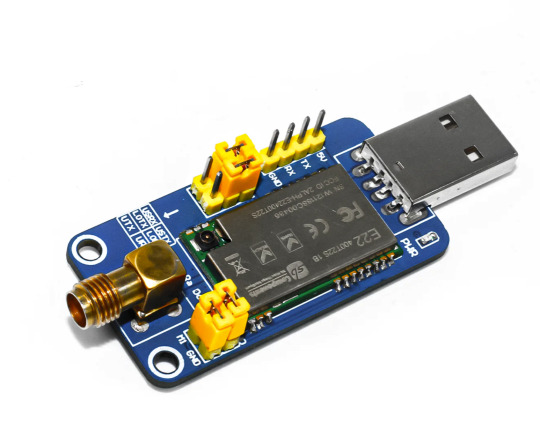

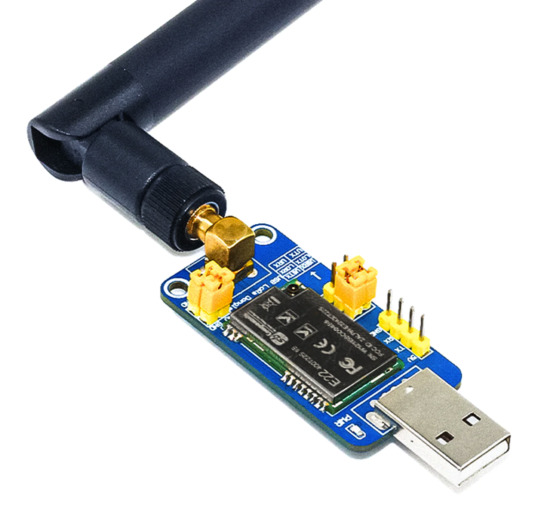
Amazing USB to LoRa Dongle for sale @SB Components. BUY NOW LINK : https://shorturl.at/ajqNY
1 note
·
View note
Text

Pico Cell 4G got covered by Fabcross.
The 4G LTE communication module "Pico Cell 4G" has been released on Kickstarter and has become so popular that the target amount was raised in just 20 minutes after the campaign started.
Pico Cell 4G is a communication module equipped with the Raspberry Pi microcontroller ``RP2040'' and the LTE Cat 4 module Quectel ``EG25-G.'' The RP2040 efficiently processes data, and the EG25-G, optimized for loT/M2M applications, enables remote monitoring, control, and data transfer, making it suitable for a wide range of applications. To read more : bit.ly/3RalKua
1 note
·
View note
Text
What type of GPS technology does the iPhone 15 series feature?
The latest iPhone 15 series boasts cutting-edge dual-frequency GPS technology that supports GLONASS, Galileo, QZSS, BeiDou, and NavIC. This means that it can receive signals from both L1 and L5 bands simultaneously, enabling accurate and speedy navigational positioning, even in urban areas with tall buildings or dense forests and canyons.
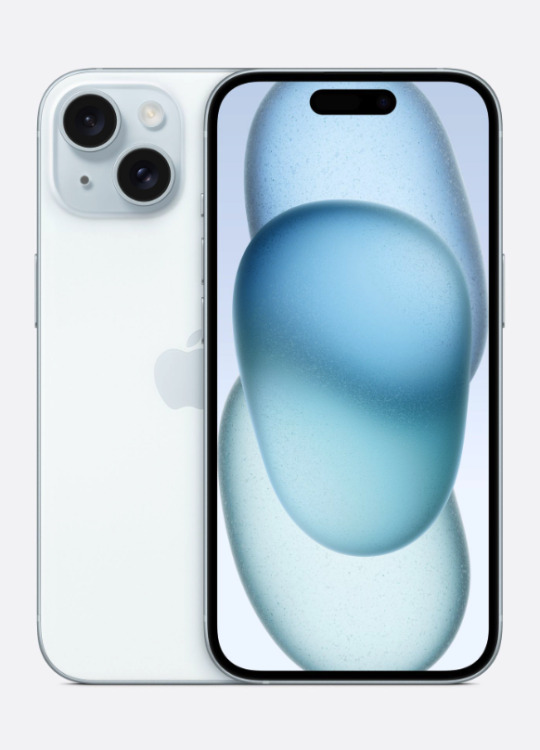
Most notably, the iPhone 15 series is the first iPhone to support NavIC, which is India's regional navigation satellite system. Hence, the iPhone 15 series can offer more precise positioning in India and neighbouring countries.
Overall, the GPS technology in the iPhone 15 series is one of the most advanced in the market, providing reliable and fast positioning in various environments.

Now the technology that you are going to get is the iPhone 15, the same or I would say the more advanced GPS technology is used in Trekko Pico GPS Logger. I have talked a lot about this genius creation and finally, this is in the market. Trust me you can never go wrong with this product and the best part was it got funded to 100 per cent in just 15 minutes of launch, apart from that the company is also providing free vouchers and goodies.
0 notes
Text
Best Places To Buy Electronic Components Online

SB Components (UK): SB Components is a leading online retailer of electronic components and kits, including Raspberry Pi, Arduino, robotics, and DIY electronics. They offer a wide selection of high-quality products at competitive prices, with fast and reliable shipping.

Digi-Key Electronics (US): Digi-Key Electronics is a global distributor of electronic components, offering a vast selection of products from over 1,000 manufacturers. They are known for their excellent customer service and fast shipping.
Mouser Electronics (US): Mouser Electronics is another leading global distributor of electronic components, offering a wide selection of products from over 750 manufacturers. They are known for their competitive prices and quick shipping.
Arrow Electronics (US): Arrow Electronics is a global provider of electronic components and services, offering a wide range of products and solutions for a variety of industries. They are known for their expertise and technical support.
Element14 (UK): Element14 is a global distributor of electronic components and kits, with a focus on innovation and emerging technologies. They offer a wide selection of products from over 1,000 manufacturers, with a focus on new and hard-to-find items.
Amazon (Global): Amazon is a global online retailer that also offers a wide selection of electronic components and kits. They are known for their competitive prices and convenience.
Other notable online retailers of electronic components include:
eBay (Global)
AliExpress (China)
BangGood (China)
NewEgg (US)
GearBest (China)
DigiChip (US)
Newark Electronics (US)
Avnet Electronics (US)
When choosing an online retailer for electronic components, it is important to consider the following factors:
Selection: Make sure the retailer offers a wide selection of the components you need.
Price: Compare prices from different retailers to get the best deal.
Shipping: Consider the shipping costs and delivery times when making your purchase.
Customer service: Choose a retailer with a good reputation for customer service in case you have any problems with your order.
It is also important to note that some online retailers may sell counterfeit or low-quality electronic components. It is important to research and choose a reputable retailer to ensure you get genuine products.
0 notes
Text
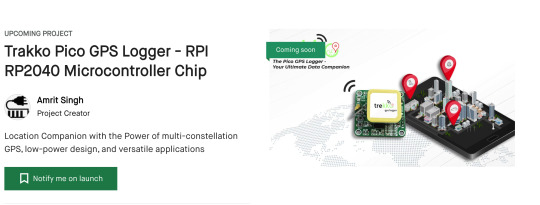
Trakko: A Tech Geek's Dream Come True
Hey there, fellow tech enthusiasts! The moment I have been waiting for has finally arrived – the launch of the groundbreaking device, Trakko, on Kickstarter today evening. I can barely contain my excitement as I write this blog, and I'm sure you'll share my enthusiasm once you learn about this game-changing gadget.
As a tech geek who's been patiently waiting for the next big thing created by my friend A, I can tell you that Trakko is the innovation we've all been yearning for. Why am I so thrilled about it? Well, let me dive into the details and share why Trakko is poised to revolutionize the way we think about GPS tracking.
Lower Cost, High Value
One of the standout features of Trakko is its cost-effectiveness. GPS tracking has always been fascinating, but it often came with a hefty price tag, especially for real-time systems. Trakko, however, is set to disrupt this trend. It's a GPS logger, which means it's not constantly sending data back and forth. Instead, it records location data and stores it locally.
The result? A much more affordable solution that's within reach for individuals and small businesses alike. Finally, we can all experience the wonders of GPS tracking without breaking the bank.
Battery Life That Goes the Distance
If you've ever used GPS devices, you've likely faced the dreaded battery drain issue. Well, Trakko has that covered too. Thanks to its GPS logging nature, it boasts an impressive battery life that can last for days, even weeks, depending on usage. This makes it perfect for those situations where you need to track something over an extended period without worrying about constant recharging or battery replacement.
User-Friendly Simplicity
Are you tired of dealing with complex setup processes and continuous monitoring? Trakko simplifies everything. Its user-friendly design means you can place it in a vehicle, attach it to an asset, or even carry it with you, and it'll start recording location data without any hassle. No more deciphering complicated instructions or troubleshooting.
Discreet Tracking, Maximum Control
Trakko is designed to be compact and discreet. Whether you're tracking personal belongings, keeping an eye on vehicle usage without anyone knowing, or monitoring valuable assets covertly, Trakko's got you covered. It's the perfect blend of powerful tracking and subtle concealment.
Data Privacy Assurance
Privacy is a growing concern in our digital age, and Trakko takes that seriously. Since it's not a real-time tracking system, you have complete control over when and how location data is accessed and shared. Your privacy is in your hands, giving you peace of mind.
Maintenance Made Easy
Forget about constant maintenance and monitoring. Trakko requires minimal upkeep because it doesn't rely on an active data connection. You can review and download the recorded data at your convenience, making it a hassle-free experience.
Bye-bye Data Costs
Live tracking systems often come with data usage costs, especially in areas with limited cellular coverage. Trakko eliminates these ongoing expenses, making it a cost-effective long-term solution.
The Ultimate Backup
Imagine relying on a live tracking system in a remote area only to lose the signal. That's where Trakko shines. It can serve as a reliable backup tracking solution, ensuring that your tracking data is always recorded and accessible, regardless of network issues or signal loss.
In conclusion, Trakko is more than just a GPS logger; it's a game-changer that simplifies tracking, offers cost-effective solutions, maximizes privacy, and puts you in control. As a tech geek who's been eagerly awaiting the next big thing, I can confidently say that Trakko has exceeded my expectations.
So, join me in supporting Trakko on Kickstarter and be part of the revolution in GPS tracking. It's time to make tracking simple, accessible, and exciting for everyone. Get ready to embrace the future with Trakko!
#kickstarter#kickstartercampaign#crowdfunding#kickstarterproject#crowdfundingcampaign#kickstartergames#kicks#crowdfund#startup#kickstarterlaunch
0 notes
Text
Exploring the Power of Near-Field Communication (NFC)
In an increasingly connected world, technology continues to evolve, bringing new possibilities and conveniences to our lives. Near-Field Communication (NFC) is one such technology that has gained prominence due to its versatility and efficiency. NFC is a short-range wireless communication technology that enables data exchange between devices in close proximity. In this article, we will delve into the workings of NFC and its applications, with a particular focus on a groundbreaking product known as PINFC that leverages NFC technology for various IoT applications.
Understanding NFC
NFC is a wireless communication protocol that allows two devices to communicate when they are within a few centimeters of each other. This technology relies on electromagnetic radio fields to establish a connection between devices. NFC operates at a frequency of 13.56 MHz, making it suitable for short-range, secure data transfer. It is a subset of Radio-Frequency Identification (RFID) technology, which enables the exchange of information between devices by bringing them into close proximity.
Key Features of NFC:
Short Range: NFC's limited range (typically less than 4 centimeters) ensures that communication is highly secure and doesn't interfere with other nearby NFC devices.
Contactless: NFC does not require physical contact between devices. Devices can communicate simply by being in close proximity, making it a hygienic and convenient option.
Two-Way Communication: NFC supports two-way communication, allowing devices to both read and write data. This capability is essential for various applications.
Security: NFC offers built-in security features like data encryption and mutual authentication, making it a reliable choice for secure transactions and data exchange.
Applications of NFC
NFC technology has found a wide range of applications across various industries:
Mobile Payments: Perhaps the most well-known use of NFC is in mobile payment systems like Apple Pay and Google Wallet. Users can make secure payments by simply tapping their NFC-enabled smartphone or wearable device on a point-of-sale terminal.
Access Control: NFC cards and tags are used for access control systems in offices, hotels, and public transportation. These systems allow authorized users to gain access by tapping their NFC cards or devices on a reader.
Smartphones and IoT: NFC is increasingly integrated into smartphones, allowing them to interact with NFC-enabled IoT devices like smart home appliances, wearable fitness trackers, and even medical devices.
Marketing and Advertising: NFC tags are used in marketing campaigns, enabling users to tap their devices to access additional information, discounts, or promotions.
Introducing PINFC: NFC for the IoT Era
PINFC is an innovative product that harnesses the potential of NFC technology for various IoT applications. Standing for "Personal IoT Near-Field Communication," PINFC is designed to simplify and enhance the way we interact with IoT devices in our daily lives.
Key Features of PINFC:
IoT Device Pairing: With PINFC, setting up and pairing IoT devices becomes effortless. Users can simply tap their PINFC-enabled device on the IoT device they wish to connect, eliminating the need for complex configurations.
Secure Data Transfer: PINFC incorporates robust security measures to ensure the confidentiality and integrity of data exchanged between devices. This makes it suitable for critical IoT applications, such as home automation and healthcare.
Energy Efficiency: PINFC optimizes power consumption, extending the battery life of IoT devices. This is crucial for devices that operate in remote or inaccessible locations.
Interoperability: PINFC is designed to work seamlessly with a wide range of IoT devices, making it a versatile solution for both consumers and businesses.
Applications of PINFC:
Smart Homes: PINFC simplifies the setup and control of smart home devices such as thermostats, lights, and security cameras.
Healthcare: In healthcare settings, PINFC can be used for secure data transfer between medical devices and patient records, enhancing patient care and data security.
Retail: PINFC can streamline inventory management and product information retrieval in retail environments, improving efficiency and customer experience.
Industrial IoT: In industrial settings, PINFC can facilitate the configuration and maintenance of IoT sensors and equipment, reducing downtime and operational costs.
Conclusion
Near-Field Communication (NFC) has emerged as a powerful technology with a wide range of applications, from mobile payments to IoT device pairing. The integration of NFC into products like PINFC is driving innovation and simplifying the way we interact with the ever-expanding world of IoT devices. As technology continues to advance, NFC and products like PINFC are poised to play a crucial role in making our lives more connected, secure, and convenient. The future of IoT is bright, and NFC technology is at the forefront of this transformation.
#raspberrypi#raspberrypi3#raspberrypie#raspberrypicking#raspberrypi2#raspberrypizero#raspberrypi4#raspberrypiprojects#raspberrypink#raspberrypistachiocake#raspberrypi3projects#raspberrypizerow#raspberrypi3bplus#raspberrypistachio#raspberrypi3b#raspberrypifoundation#raspberrypi3modelb#raspberrypicase#raspberrypineapple#raspberrypicamera#raspberrypicker#peachraspberrypie#blackraspberrypie#raspberrypickin#appleraspberrypie#raspberrypicluster#raspberrypi4b#raspberrypinacolada#raspberrypinklemonade#raspberrypicomputemodule
0 notes
Text
Raspberry Pi RP2040 MCU featuring the Quectel EG25-G 4G LTE cellular module in PicoCell 4g
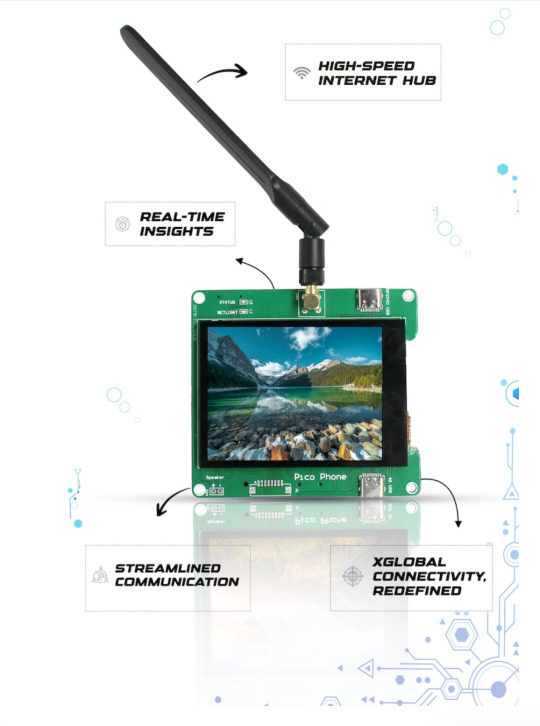
Introducing the revolutionary PicoCell 4G device, powered by the Raspberry Pi RP2040 MCU and featuring the Quectel EG25-G 4G LTE cellular module. In today’s world, where connectivity and innovation are key, this cutting-edge technology seamlessly combines the power of the RP2040 chip with the connectivity prowess of the Quectel EG25-G 4G LTE module. The PicoCell 4G is not your ordinary device; it transcends boundaries and redefines the way we connect, create, and communicate.
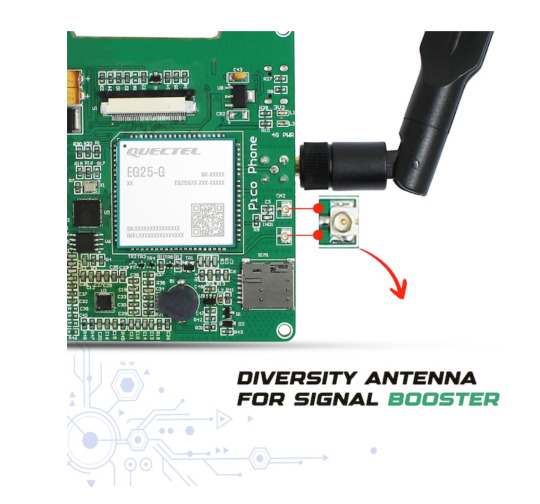
With its Multi-Constellation GNSS support, the PicoCell 4G can quickly and accurately determine your location, regardless of where you are. It acts like a bridge connecting people worldwide with call and messaging coverage that knows no borders. The EG25-G variant is like a world traveller, supporting a wide range of LTE FDD and TDD frequencies, UMTS options, and GSM. In simple terms, it keeps you connected no matter where you go. Are you seeking a dependable and swift wireless connection while on the move? Consider the PicoCell 4G as your solution. This adaptable device functions not only as a communication tool but also as a high-speed data server that supports technical features such as HTTP and TCP/IP. With the convenience of its dongle feature, you can enjoy lightning-fast LTE speeds of up to 150Mbps (DL) and 50Mbps (UL) while on the go. Essentially, it’s like having your high-speed internet connection that can be easily carried in your pocket. Perfect for the Tech-Enthusiast Attention tech enthusiasts!
The PicoCell 4G is specifically designed for M2M and IoT applications and acts like a superhero for connected devices, guaranteeing their optimal performance. It comes with a diverse antenna that provides a strong signal even in challenging situations. You can customize it to meet your specific needs with additional GPIO options. It is also energy-efficient, ensuring that it won’t run out of power when you need it the most. Furthermore, it features a status LED that offers real-time updates on network and satellite connections, making it easy to stay informed. It supports Quectel Enhanced AT Commands, which makes controlling your devices a breeze, ensuring that everything is effortless. Hello, the PicoCell 4G is a powerful device that caters to M2M and IoT applications with its exceptional features. It is powered by the plate number 1 chip with a 32-bit dual ARM Cortex-M0+ microcontroller and 8MB flash, and equipped with the Quectel EG25-G 4G LTE cellular module, supporting nano SIM cards. The device features dual Type C interfaces for programming and accessing the 4G module, a 3.2” Touch Display with a resolution of 320x240 pixels, driven by the plate number 2 Display Driver and plate number 3 capacitive touch controller. It comes in a range of vibrant RGB colours and offers additional GPIO options for peripheral connections. Furthermore, the device includes boot buttons for Pico, a power button for manually turning the 4G module on/off, an onboard microSD card for data logging, a battery connector with a charging circuit for portable use, a 3.5mm Audio Jack for headphones, and even includes speaker support for attaching a speaker. Additionally, the device provides indicator LEDs for board supply, module power, network status, and system status. The PicoCell 4G is an exceptional device optimized for M2M and IoT applications. It offers worldwide coverage and supports MIMO and DFOTA. With a multi-constellation GNSS receiver, you can track precise locations with ease. The 4G module supports various network bands and different speech codec modes. It has low power consumption for efficient operation and delivers LTE Max. 150Mbps DL/50Mbps UL data speeds. The PicoCell 4G is a game-changer that’s here to redefine the way we connect and create. Check out the Product Page and join the journey to experience connectivity without limits.
TO KNOW MORE : bit.ly/3RalKua
#PicoCell4G#WirelessWonder#ConnectAnywhere#MiniCellTower#CellularFreedom#PocketPower#4GOnTheGo#SignalSaver#StayConnected#MobileNetworkBoost
0 notes
Text
Which SBCs are best for your DIY projects
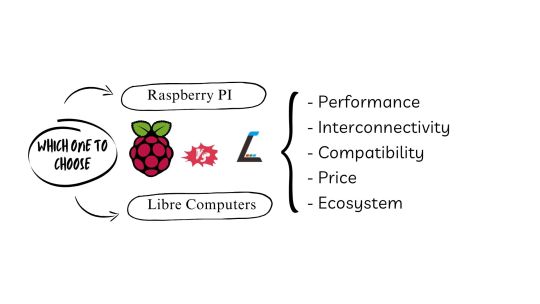
In the world of DIY electronics and embedded system projects, single-board computers (SBCs) reign supreme. Among the top contenders, the Raspberry Pi and the Libre Computer Board stand tall, each offering a unique set of features and capabilities. In this blog, we embark on a technical journey to compare these two titans, helping you make the perfect choice for your next DIY endeavour.
1. Efficiency: Raspberry Pi and Libre Computer Boards Go Head to Head
The Raspberry Pi boasts a reputation for dependability and robust performance, thanks to its Broadcom CPU. With models ranging from quad-core ARM Cortex-A53 to quad-core Cortex-A72, it's a versatile choice for a wide spectrum of applications. The Raspberry Pi 4, in particular, shines with its powerful CPU and GPU performance.
Libre Computer Boards, on the other hand, come in various models and CPU architectures, including ARM Cortex-A53 and Cortex-A72. These boards offer competitive performance and often provide more RAM options than their Raspberry Pi counterparts.
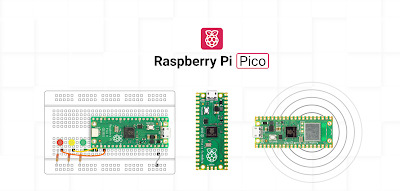
2. Capabilities of the GPU: Graphics Galore
Raspberry Pi models are equipped with Broadcom VideoCore GPUs, optimized for multimedia applications, making them perfect for video playback, gaming, and graphics-rich projects.
Libre Computer Boards offer ARM Mali GPUs in some models, delivering excellent graphics performance. What's more, certain models support GPU acceleration for machine learning tasks, making them a top choice for AI and computer vision projects.
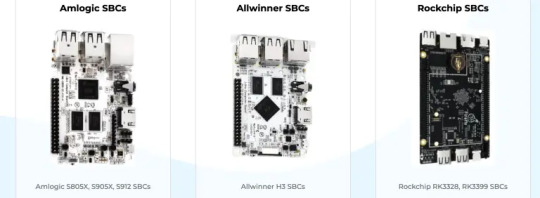
3. Interconnectivity: Ports, Pins, and More
Raspberry Pi boards come well-connected, featuring multiple USB ports, Ethernet, HDMI, and GPIO pins. The Raspberry Pi 4 even boasts a USB-C port for charging and supports dual-monitor setups via micro HDMI ports.
Libre Computer Boards offer a similar array of connectivity options, including USB 3.0 ports, Gigabit Ethernet, and HDMI. Some models, like the Tritium H5, sweeten the deal with eMMC storage for faster data access.
4. Operating System Compatibility: The Heart of the Machine
Raspberry Pi shines with its extensive community support and an extensive library of compatible software. Raspbian (now Raspberry Pi OS) is a highly optimized Linux distribution tailored specifically for Raspberry Pi devices, offering user-friendliness ideal for beginners.
Libre Computer Boards, while capable of running various Linux-based operating systems, may have more limited community support compared to the Raspberry Pi.
5. Price Wars: Budgeting for Brilliance
Raspberry Pi remains an unbeatable value, offering affordable options like the Raspberry Pi Zero and the Raspberry Pi 3A+. Even the higher-end Raspberry Pi 4 remains budget-friendly.
Libre Computer Boards, while slightly pricier than their Raspberry Pi counterparts, often pack additional features and better hardware specs, making them a compelling choice for enthusiasts.
6. The Ecosystem and the Community: Strength in Numbers
The Raspberry Pi boasts a vast and active community, resulting in an abundance of documentation, tutorials, and third-party accessories. This makes it an excellent starting point, especially for newcomers.
While the Libre Computer Boards community is growing steadily, it may not rival the sheer size of the Raspberry Pi community. However, if you're experienced with SBCs, this might not be a deal-breaker.
7. Unique Features: Tailored to Your Needs
Raspberry Pi stands out with specialized add-ons like the Raspberry Pi Camera Module for photography and video projects and the Raspberry Pi Pico for microcontroller applications.
Some Libre Computer Boards bring unique features to the table, such as the ROC-RK3328-CC with PCIe support, allowing you to integrate custom hardware components seamlessly.
Conclusion: Finding Your Perfect SBC Match
Choosing between a Raspberry Pi and a Libre Computer Board hinges on your project requirements and your familiarity with single-board computers.
For beginners and those seeking a vast ecosystem, the Raspberry Pi is a fantastic choice. However, if you require more power and flexibility, Libre Computer Boards won't disappoint.
Consider factors like performance, GPU capabilities, connectivity, OS support, price, and community support when making your decision. Ultimately, both SBCs offer advantages and trade-offs, and your choice will depend on your project goals and expertise.
So, whether you're a Raspberry Pi enthusiast or a Libre Computer Board aficionado, the world of DIY electronics is at your fingertips. Happy tinkering!
Stay tuned for more exciting tech insights and DIY projects! Don't forget to follow us for updates and join our vibrant tech community.
#DIY projects#Libre computers#Raspberry community#Raspberry Pi#Raspberry Pi 3A#Raspberry Pi 4#Single board computers
4 notes
·
View notes